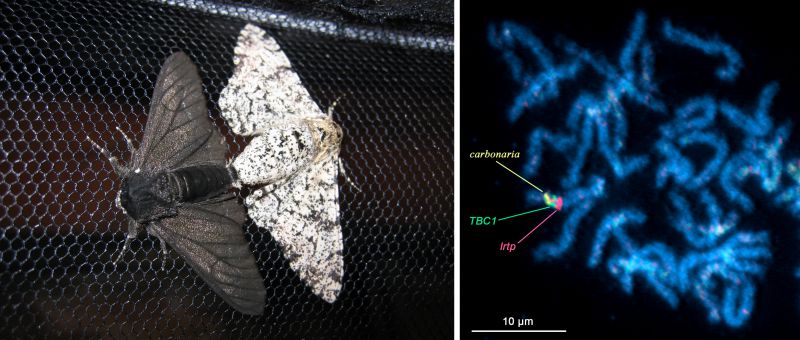Evolutionary change that occurs in the ecological time scale is
often termed microevolution, although really, at its base, it is not a distinct process. As a
recent example, the appearance and spread of antibiotic resistant bacterial pathogens (an
evolutionary process) has been driven by an ecological change, the wide-spread medical
and vetrinary use of antibiotics, and a molecular mechanism, known as "horizontal
gene transfer, that is common among bacteria (see Baquero & Blazquez, 1997).
Perhaps the classic example of ecological evolution is that of industrial melanism,
which occurs in environments in which pollution from coal-fired power plants is
uncontrolled.
In the north of England such pollution changed the color of trees (and killed the
lichens growing on their bark) such that some insects, such as the moth Biston
betularia, became more conspicuous to predators. This ecological change led to a
change in selection pressure that favored the survival and reproduction of darker variants,
and resulted in an increase in "carbonaria" (dark) B. betularia.
In B. betularia, melanism was originally due to a strongly selected,
dominant mutation (see Saccheri et al., 2008); as expected, as pollution has come under
control, this selection pressure has decreased dramatically, and the frequency of carbonaria
variants has decreased.
Using molecular methods, it has been possible to map the location mutation to a 200
kilobase region of the B. betularia genome (see van't Hof
et al., 2011).
|


